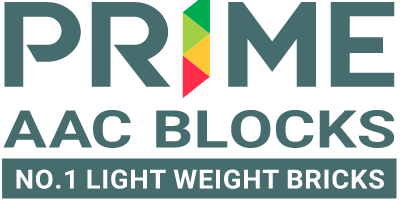
AAC Blocks VS Clay | Red Bricks
AAC blocks are one of the implementations of the major achievements of the 21st century in the field of the construction industry. It is a revolutionary material offers a novel combination of high sturdiness and strength, low weight and superior inexperienced options.
In the 21st century, traditional construction like using Red Bricks and clay Bricks usage is slowing down. AAC Blocks or AAC Bricks replace the traditional bricks and are most commonly used building materials.AAC Blocks are not only the latest technology but also the most extensively used building materials worldwide. These building materials are built with square measure the foremost standard and leading construction material as a result of its low cost, sturdy and simple to handle and to figure with.AAC Blocks are eco-friendly building material gives a prospective solution to building construction.
Concrete blocks and clay bricks have a lot of differentiation in the composition and other structural utilities in the usage that most people are not aware of Consequently, you find that in some cases the material picked between the two ends up not being suitable for the project in terms of both pricing and design.
If you are considering putting up a residential house or commercial building here are some parameters:
|
Advantages Of Using AAC Blocks For Constructing Your Beautiful Home
Lightweight ACC blocks are units 1/3rd of a load of standard clay bricks in building construction. It minimizes excess dead load on the foundation and the support structure of your house construction. Lightweight buildings are safer in an earthquake.
Buildings infrastructure which includes AAC Concrete Blocks as a building material does not require separate sound insulation products because AAC Blocks itself acts as an anti-sound material this is the reason most of engineers and architects most preferred building material in construction industries. Only the reason AAC Blocks are lightweight material that offers you excellent sound insulation, minimize noise pollution in the major cities.
As Light Weight Bricks are made with different compositions which allows you can be cut, drill, chiseled, drawn, nailed and also be shaped in accurate dimensions and proportion in an easy way.
AAC Blocks safeguard your home and commercial property with fire resistant. The melting point of Cement Blocks is above 1600 degree Celsius (more than twice the normal temperature in a building fire of 650°C). Therefore, it can stable up to 4 to 6 hours based on the thickness of the block.
Lightweight Concrete Blocks are non-toxic. They do not discharge any type of fumes nor irritants during manufacturing, installation and when in use. It does not absorb moisture hence is microbe-free ultimately giving you better air quality.
AAC is capable of withstanding harsh climatic conditions and remains unaffected for many years. Additionally, Aerated Concrete Blocks are reusable, renewable and recyclable and useful. ACC blocks are made from Fly Ash and therefore are Eco-Friendly Bricks.
With all on the top of benefits, AAC blocks are greatly price effective as compared to the clay bricks. Because it reduces all the standard dead and uncalled-for construction practices.
